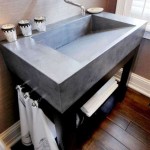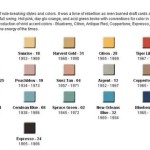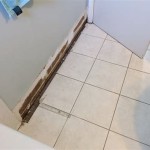How Long Should a Small Bathroom Renovation Take to Dry?
Renovating a bathroom, even a small one, involves a significant amount of moisture. From plumbing to tile installation, various stages require the application of water, which takes time to dry properly. Knowing how long it takes for a small bathroom renovation to dry is crucial for planning your project and ensuring a successful outcome. Several factors influence the drying time, including the specific materials used, the ambient temperature and humidity, and the efficiency of ventilation.
Understanding the Drying Process
Bathrooms are naturally humid environments, making them susceptible to moisture buildup during renovations. The drying process primarily involves evaporation, where water molecules turn into vapor and disperse into the air. This process is influenced by several factors:
- Temperature: Warmer temperatures accelerate evaporation, making the drying process faster.
- Humidity: High humidity slows down the drying process by reducing the rate of evaporation.
- Airflow: Proper ventilation increases airflow, facilitating the removal of moisture from the air and accelerating drying.
- Materials: Different building materials have varying drying times. For example, concrete takes longer to dry than wood.
It is important to note that the drying time for a bathroom renovation is not simply about waiting for the surfaces to feel dry to the touch. The underlying structure and materials need sufficient time to dry completely to prevent mold growth, warping, and other issues.
Typical Drying Times for Small Bathroom Renovations
Here is a general guideline for the drying times of different stages in a small bathroom renovation:
- Plumbing Repairs: Simple plumbing repairs, such as replacing a faucet or sink, may take a few hours to dry completely, while more extensive repairs involving pipes and drain lines could take up to a day.
- Tile Installation: The drying time for mortar and grout used in tile installation typically ranges from 24 to 72 hours.
- Paint and Grout Sealing: Paint and grout sealant require at least 24 hours to dry completely, allowing for proper curing and adhesion.
- Shower and Tub Surrounds: Shower and tub surrounds require adequate time to dry, with typical drying times ranging from 2 to 7 days depending on the materials used.
These are just general guidelines, and it's essential to consult with the contractor or manufacturer for specific drying time recommendations based on the materials and conditions of your project.
Factors Affecting Drying Time
Several factors can affect the drying time of a bathroom renovation, including:
- Size and Complexity of the Renovation: Smaller, simpler renovations generally take less time to dry compared to larger, more complex projects.
- Materials Used: Different building materials have varying drying times. For example, concrete takes longer to dry than wood.
- Ambient Temperature and Humidity: Warmer temperatures and lower humidity levels accelerate the drying process.
- Ventilation: Proper ventilation, such as using fans or opening windows, helps remove moisture from the air and speeds up the drying time.
- Water Damage: In case of water damage, it may be necessary to use specialized drying equipment to remove excess moisture and prevent mold growth.
By understanding these factors, you can take necessary steps to optimize drying time and prevent moisture-related issues.
Tips for Accelerating the Drying Process
Here are some tips to help accelerate the drying process in your bathroom renovation:
- Increase Ventilation: Use fans to circulate air and open windows to allow fresh air to enter the bathroom.
- Maintain Adequate Temperature: Keep the bathroom temperature above 60 degrees Fahrenheit to promote evaporation.
- Use Dehumidifiers: Dehumidifiers can effectively remove excess moisture from the air, speeding up the drying process.
- Avoid Covering Surfaces: Avoid covering newly installed surfaces with tarps or other materials that can trap moisture.
- Check for Leaks: Address any leaks promptly to prevent further moisture buildup.
By following these tips, you can help ensure that your bathroom renovation dries properly and prevent potential problems.
Remember, it is crucial to adhere to the recommended drying times for each material and stage of the renovation. If you are unsure about the drying time for a specific material, consult with the manufacturer or a qualified contractor.
By understanding the factors that influence drying time and taking the necessary steps to accelerate the process, you can minimize delays and ensure a smooth and successful bathroom renovation project.

How Long Does It Take To Refurbish A Bathroom Victoriaplum Com

How Long Does It Take To Refurbish A Bathroom Victoriaplum Com

How Long Does It Take To Refurbish A Bathroom Victoriaplum Com

How Long Does It Take To Refurbish A Bathroom Victoriaplum Com

How Long Does It Take To Refurbish A Bathroom Victoriaplum Com

How Long Will It Take To Remodel My Bathroom Bath Tune Up

Bathroom Remodeling A Step By Guide Budget Dumpster

How Long Does It Take To Refurbish A Bathroom Victoriaplum Com

How Long Does A Bathroom Remodel Take 2024 Badeloft Usa

How Long Does It Take To Install A New Bathroom






